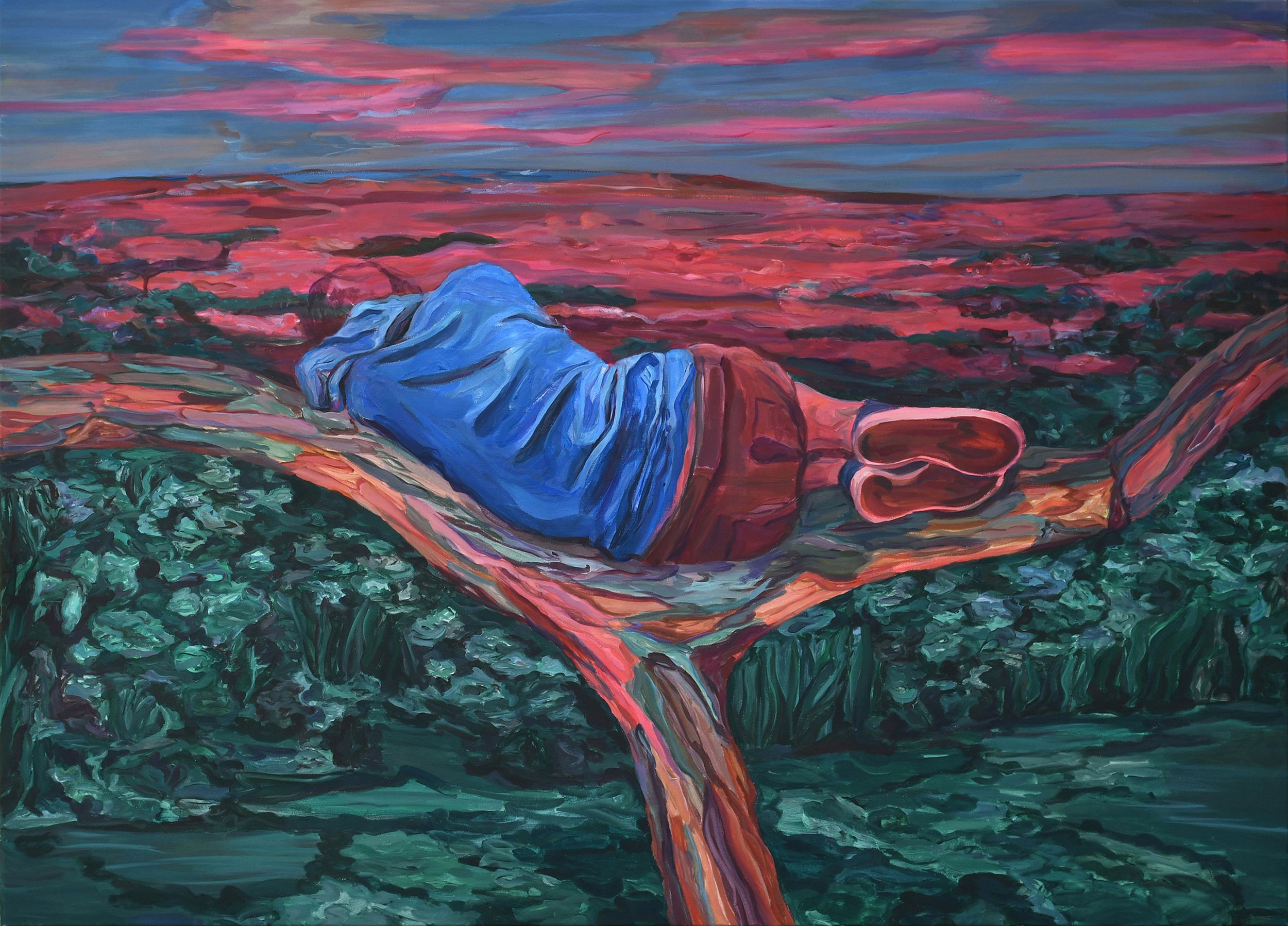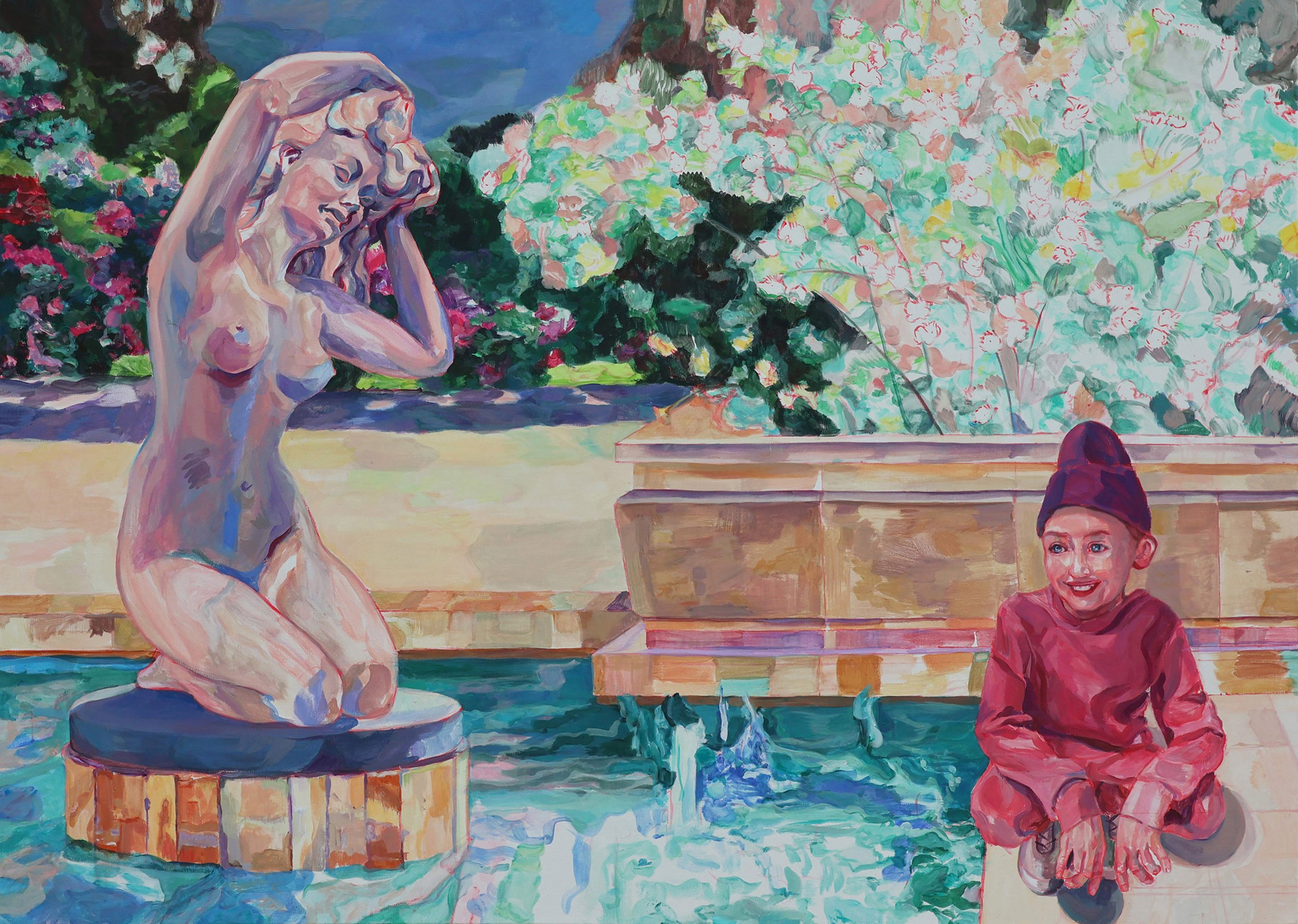Anna Sobkowiak
Anna Sobkowiak (b. 1980, Poland) is a figurative painter and 2D animator living and working in Poznan, Poland. She graduated from the Academy of Fine Arts in Poznan in 2006 (diploma in the woodcut studio). In 2004, she also studied at the Academy of Fine Arts in Prague under the International Student Exchange Scholarship. She spent her formative years in three European capitals: Prague, London, and Warsaw, which has shaped her awareness of painting and appreciation for the beauty of the world.
The main subject of her works are relations between humans, including their feelings, thinking and acting, and the environment in which they live. She expresses the intensity of life's moments, using riveting vibrant colours and — lately — more feminist themes.
For the last twelve years she has exhibited in Poland, the Czech Republic, Germany and the UK, for instance, in Starter Gallery (Poznan, Poland) and Leto Gallery (Warsaw, Poland). After studies, she was associated with Poznan Nowa Gallery and was a laureate of the ‘Salted Candy 2010’ competition. Nowadays, she also participates in online international art exhibitions, such as ‘Together/Somewhere’ organised by Visionary Projects and Art City Works. She is a member of London Paint Club and Visionary Projects in NY. Her works, represented by Maggio Art Consultancy in London, are held in private art collections in Poland, Spain Canada and United States.
Could you tell us more about your background and how you began creating art?
As I recall, it all started rather innocently. Namely, when I was eight, my work was awarded in an international art competition in Ankara. Afterwards came next small successes. I drew a lot at that time. And then, when I was twelve, I went to Italy for holidays. Truth be told, I didn't know anything about European art and there I saw some stunning masterpieces in thriving cities, such as Rome, Padua, Venice, and Florence. It was like a revelation. Great art and architecture surrounded me everywhere and at that very moment I understood that art is something exceptional and that I wanted it to be part of my life. I think it was the turning point. So it was nothing special or orginal — I went to Italy and decided to become an artist.
What does your art aim to say to its viewers?
There is a famous quote from Laura Mulvey, who claimed that analyzing pleasure or beauty destroys it. My intension is to provide the viewer with aesthetic pleasure, which should evoke memories, give some kind of a soothing experience and help the viewer enjoy daily activities and life. I try to explore this beauty in a new light (at least new to me), which suggests an insight, a look into ourselves, free from conventional, standard criteria, modes, far from special form, composition, or fashionable color choices, but close to the simplicity and inner aesthetic sensitivity of our nature. This is the very moment when the painter says: I feel that I am painting something beautiful. I believe the painting is not confined in frames and can touch the emotions of the viewer and get in an intimate and personal contact. As Gerhard Richter put it: ‘Talk about painting: there's no point. By conveying a thing through the medium of language, you change it. You construct qualities that can be said, and you leave out the ones that can't be said but are always the most important.’
Can you tell us about the process of creating your work? What is your daily routine when working?
I used to work as an animator and matte painter in Warsaw. I designed clothes, props and digital background in documentary films. This experience allowed me to create a painting process with similar principles and methodology. I use photos from the Internet or my own, sometimes I document the lives of my friends, and then I build a collage of photos and this is the final sketch. It means that the props, characters and symbols which I place in the collage and how I design the final scenery of the surroundings always have a decisive influence on building the story in the picture. For me, the process of creation is very subtle, far from prediction and constantly demanding. You see, with this blend, you are in three places simultaneousy: there is the sketch of the project, the actual painting on canvas, and your own head. There is still ongoing communication, sometimes not logical and rather subconscious, which I like the most. By surrendering to the unconscious and irrational, I discover the most valuable things for me. I often create very quickly, but then I still need to work more on my pieces. Painting is a meditation for me, and time during this process is a fiction.
What is the essential element in your art?
Actually, there are quite a few essential facets in my creation process. Some of the most relevant ones are, to name just a few: inner strength, passion, meaning and the importance of the figures I paint. I focus on their psyche and emotions, analyzing feelings such as delight, joy, fascination and commitment. I often put them into ambigous spaces or situations and thanks to this procedure I try to tell the story hidden in the image. The area of my artistic research includes people of various ages, with a wide range of aspirations and experiences. The main questions which I ask myself are: Who is my character? What interests them? What worries them? What are they looking for? What is their daily life like?
What is more, I'm currently focusing on a brighter palette, vibrant colours, subtle light and a ‘soft’ way of painting. It allows me to depict the affirmation of life and the intensity of its moments. Conceptually, I am experimenting with depictions of Polish women of different backgrounds. I treat these representations on various levels, both visual and psychological. I also present diverse attitudes towards women: my own, other women’s as well as men’s.
In your opinion, what role does the artist have in society?
For me, the crucial thing is to stimulate the imagination of others. I suspect that life without art, however possible, would be bland. That is why artists will always be needed to create experiences for sensitive people, for those who are looking for aesthetics, beauty, logic, controversy, radical or yet unknown solutions, you name it. (Yes, I do believe that art can still surprise us.) Art is not publicity, art has little to do with trends and mainstream representatives of popular topics, it doesn’t need to comply with the system of awards and rewards. Art is pleasure. Art is art.










